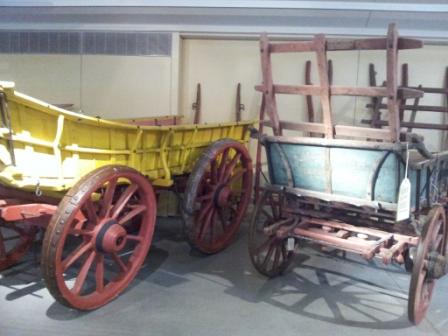written by Adam Koszary, Project Officer for Our Country Lives.
My mind has been focused on one particular question since arriving at MERL: how do you display rural life?
Other equally pertinent questions for us are: Who is our audience? How can we appeal to wider groups? What is the core message of the Museum of English Rural Life?
These are the main issues which we are grappling with in these early days of Our Country Lives. We began with a broad idea of what we want to do, and we are now gradually narrowing down our ideas and expectations, so that we can finish with a focused new display which keeps our current visitors happy but also entices new people to come and learn about English rural life, and participate with the museum in projects and events.
Determining those people and communities who would not usually visit MERL was the focus of a meeting with our consultants last week, but we have already been working with volunteers and our current audiences to find out who our visitors are and what they want. For instance, if you came with your family to the village fete this year then you may have been asked to complete a questionnaire. The results from this consultation are already having a real effect on the direction in which MERL is heading with Our Country Lives.
Another audience which we want to hear from is the student and staff community of the University of Reading. Myself and MERL’s Marketing Officer Alison will be at this year’s Supporting You Day, and will be available all day to let you know about the museum but also asking how we could do better as a service to university staff and students.
Whether you think we need more seminars and lectures, or should advertise better on campus, we would like to know what would make you visit MERL, or what is currently stopping you. We will be located in the Palmer Building, most probably in the Reception, so come and say hello!





